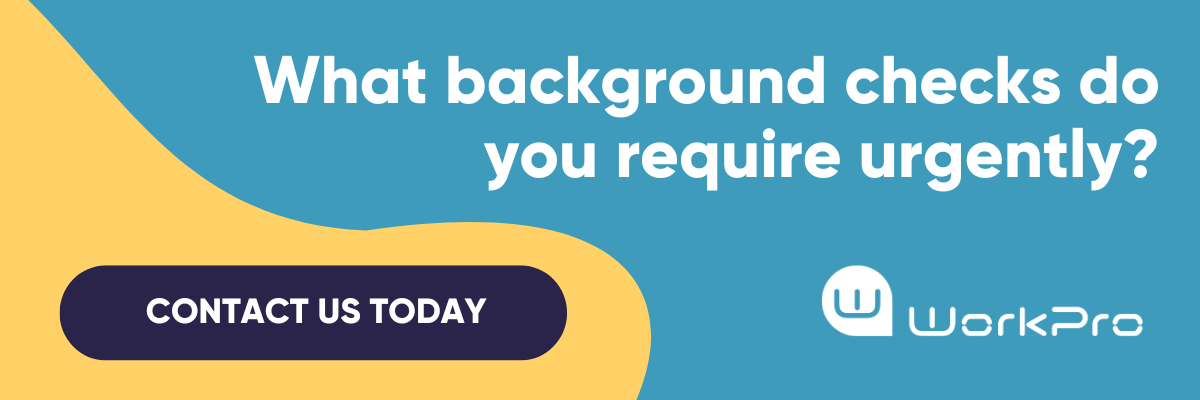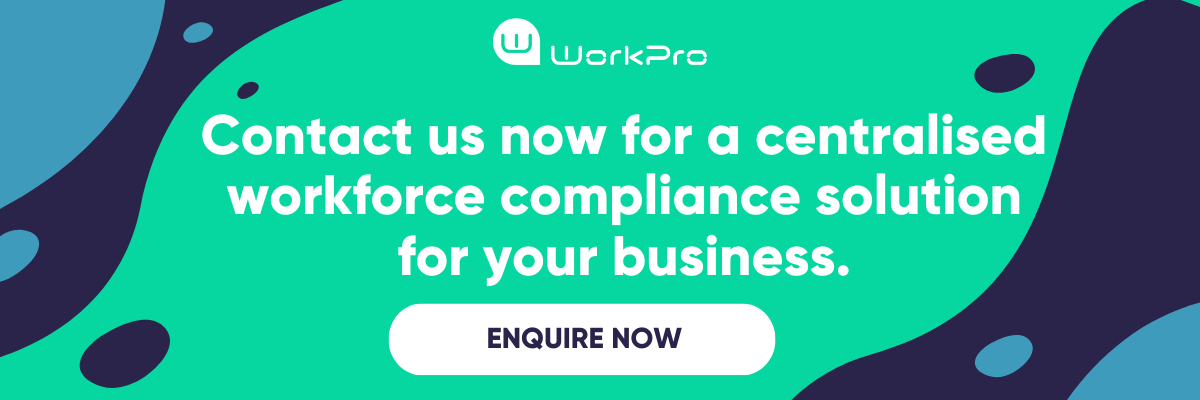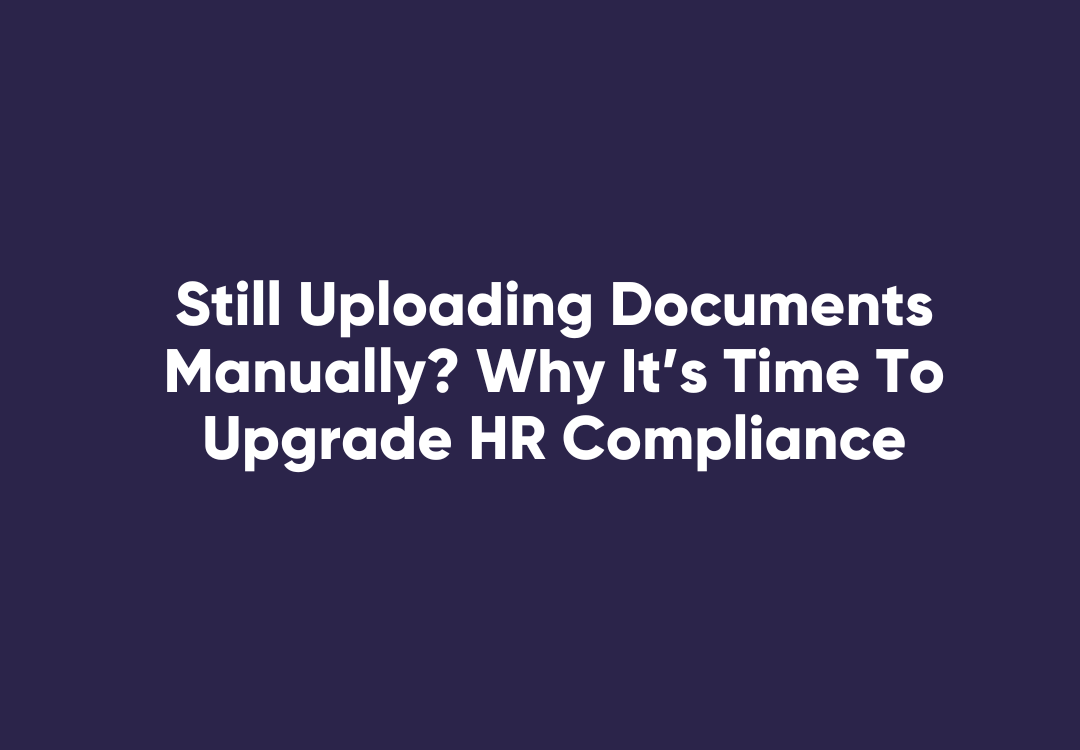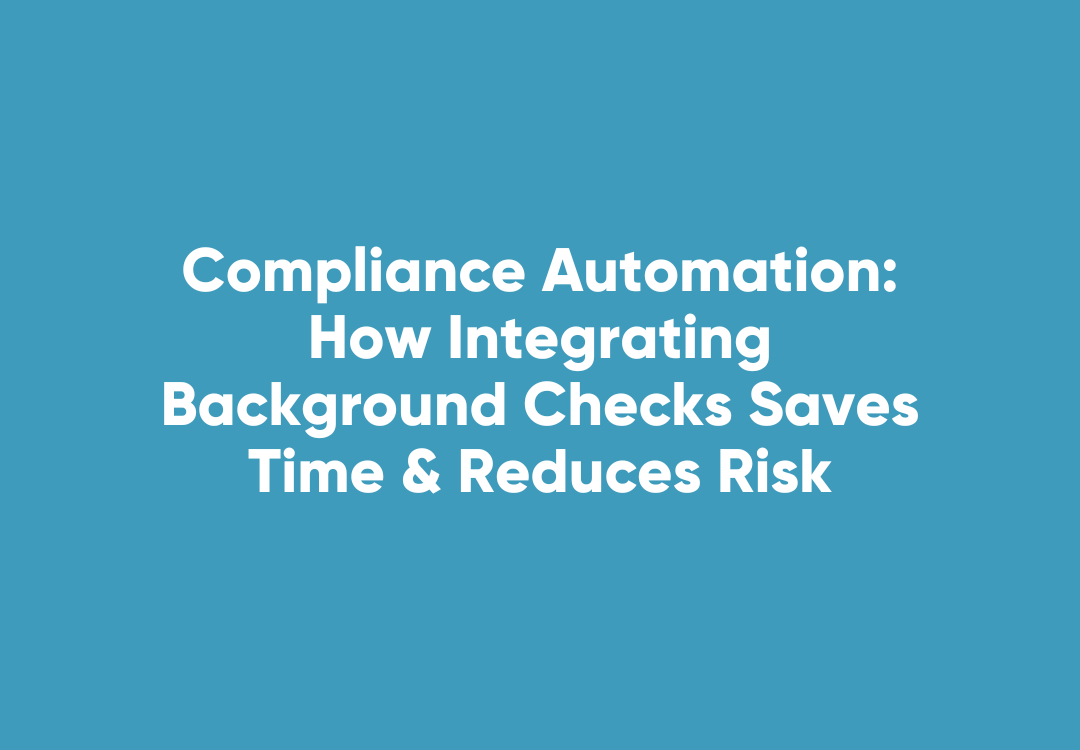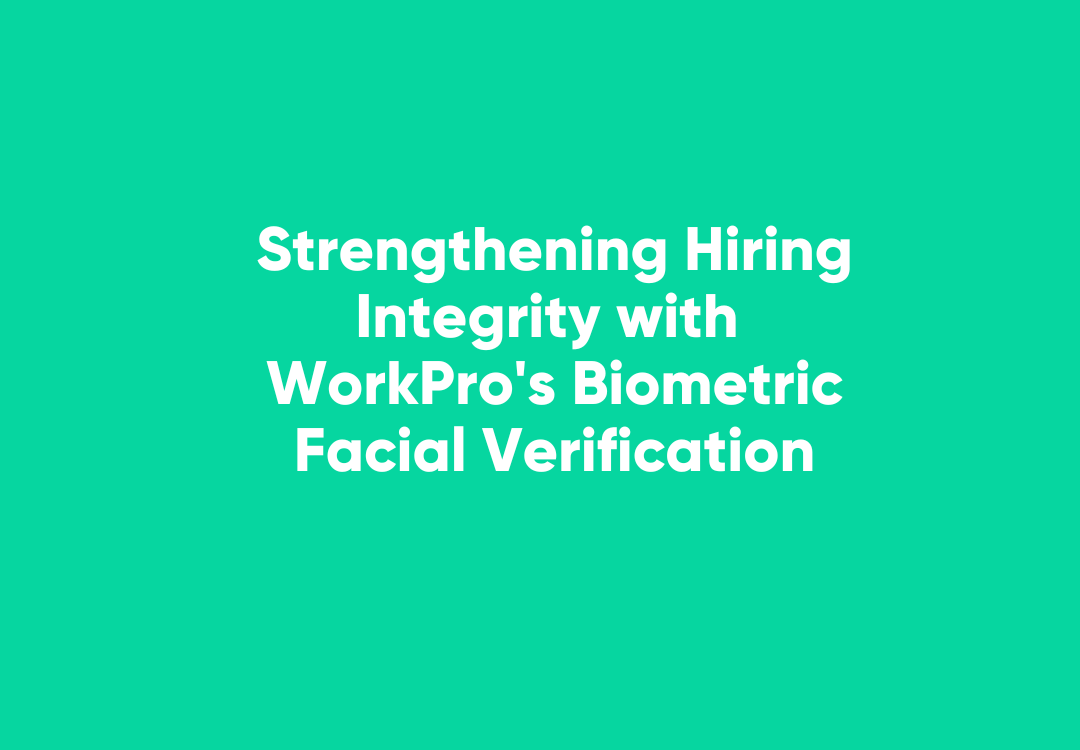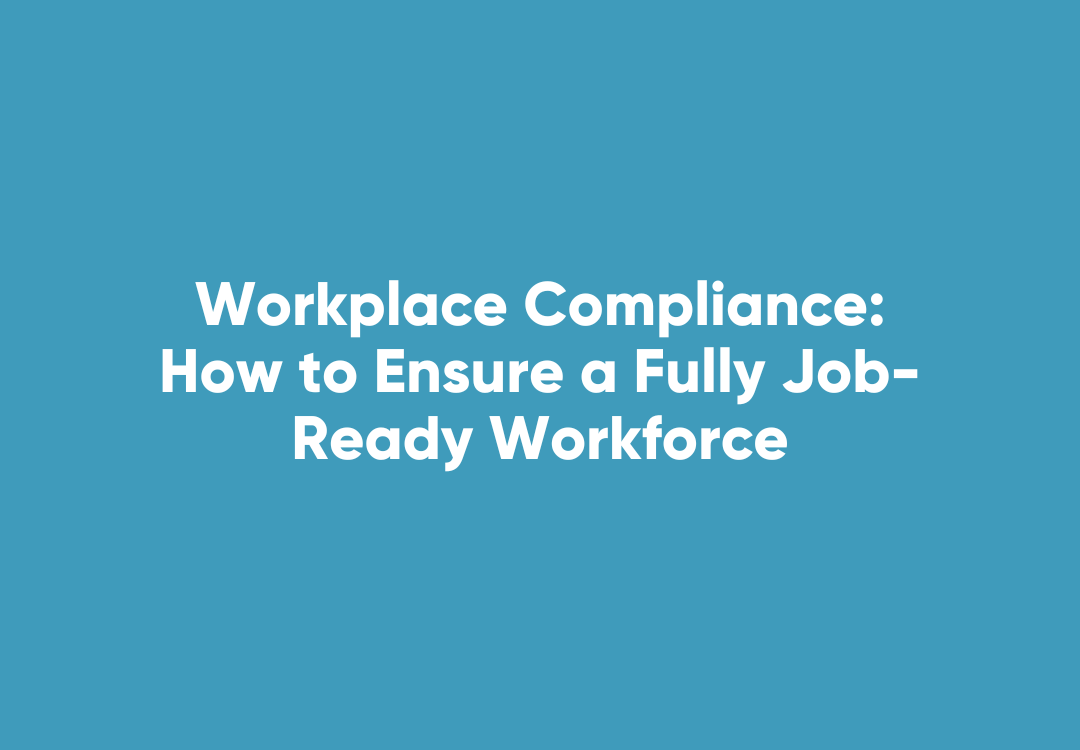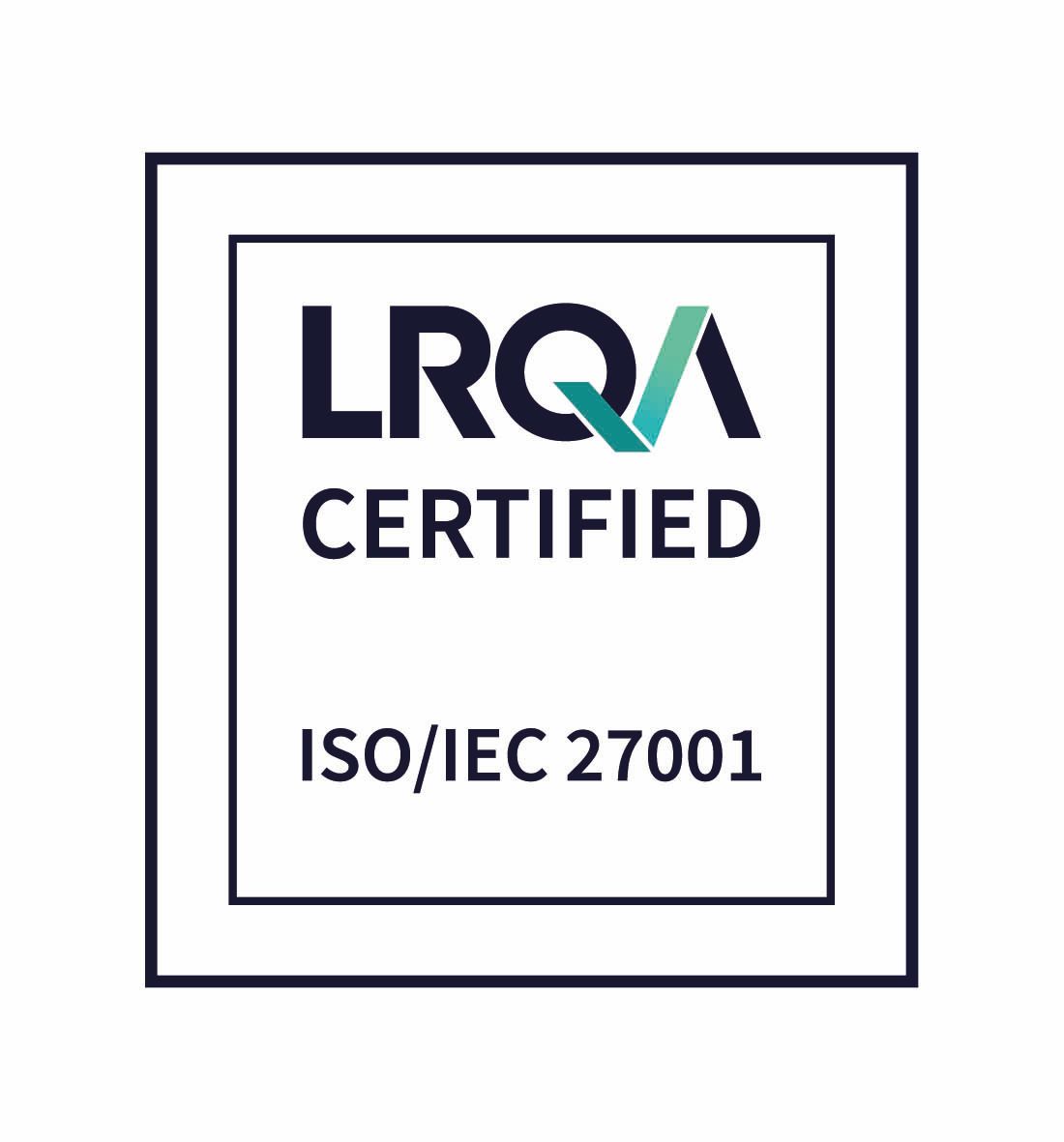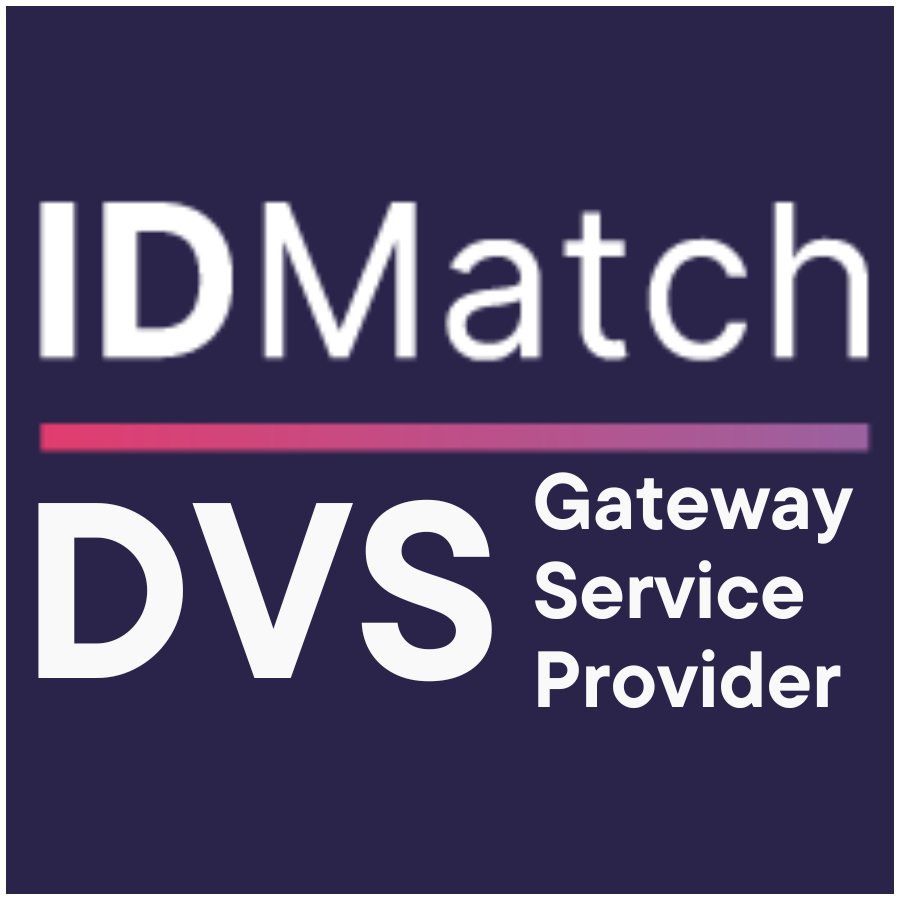Workplace Safety & the Job-Ready Employee: Why It Matters
Workplace Safety & the Job-Ready Employee: Why It Matters
A truly job-ready employee isn’t just skilled and qualified – they must also be prepared to operate safely in the workplace. Workplace safety is a critical aspect of job-readiness, ensuring employees understand and adhere to legal, operational, and industry-specific safety standards before they even start.
Organisations that prioritise workplace safety compliance and structured onboarding reduce risks, improve employee confidence, and maintain a secure work environment.
This guide explores why workplace safety is essential for job-readiness and how HR teams can integrate compliance and best practices into their hiring and training processes.
What is the Connection Between Workplace Safety and Job-Readiness?
The connection between workplace safety and job-readiness is the requirement for employees to be trained, certified, and prepared to operate safely from day one. Job-readiness includes understanding safety protocols, legal responsibilities, and industry compliance standards.
To ensure employees are truly job-ready, organisations must integrate safety training, compliance checks, and risk assessments into their onboarding and hiring processes, reducing accidents, ensuring legal compliance, and improving workforce productivity.
A report from the International Labour Organisation (ILO) states that 2.3 million workers worldwide suffer from work-related accidents each year, highlighting the importance of integrating safety into job readiness.
Key Elements of Workplace Safety for Job-Readiness
1. Pre-Employment Safety Training
Ensuring safety compliance before employees start reduces risk and accelerates productivity. Pre-employment training should include:
- Workplace Health & Safety (WHS) training specific to the industry.
- Hazard identification and risk assessment education.
- Emergency procedures and first aid training to improve workplace response.
2. Safety Compliance & Legal Regulations
HR teams must ensure every new hire meets industry safety requirements before starting work. Key compliance steps include:
- Verifying completion of mandatory WHS certifications.
- Conducting safety risk assessments to align employees with workplace policies.
- Ensuring employees are aware of their legal rights and responsibilities regarding safety.
3. Onboarding Best Practices for Workplace Safety
Effective safety-focused onboarding ensures that new employees integrate seamlessly into a safe and structured work environment. HR teams should:
- Conduct on-site safety orientations to familiarise employees with workplace hazards.
- Implement digital safety training modules to streamline learning.
- Assign safety mentors or supervisors to guide employees in their first weeks.
4. Ongoing Workplace Safety Culture & Training
Safety training shouldn’t stop after onboarding. A strong workplace safety culture requires:
- Regular safety drills and refresher training to reinforce key concepts.
- Employee feedback mechanisms to report safety concerns.
- Continuous monitoring and improvement of safety policies and procedures.
How WorkPro Helps HR Teams Build a Safety-Compliant, Job-Ready Workforce
WorkPro helps HR teams integrate safety training, risk assessments, and compliance tracking to ensure employees are fully job-ready before they start.
Key WorkPro Features for Workplace Safety Compliance:
- Employment WHS & Safety Training
- Over 60 eLearning modules are available, including Workplace Health & Safety
- Ensures employees complete safety certifications before and after onboarding.
- Automated Credential Management
- Monitors safety certifications and expiry dates.
- Sends automated renewal reminders to maintain compliance.
- Automated Background Checks
- Over 100 automated background checks including Australian Citizenship and Work Rights Checks, Nationally Coordinated Criminal History Checks, and more.
- Ensure the safety of your workplace by conducting these checks, along with constant automated monitoring for expiries.
- Onboarding & Safety Risk Assessments
- Digitises onboarding safety checklists and risk assessments via eLearning.
- Ensures employees meet regulatory safety standards before day one.
- Centralised HR Compliance Dashboard
- Offers real-time insights into workforce safety readiness.
- Allows HR teams to track training completion and compliance status.
By leveraging WorkPro’s safety and compliance tools, HR teams can ensure every employee is trained, certified, and job-ready from day one.
Workplace safety is a non-negotiable aspect of job-readiness, ensuring that employees are protected, compliant, and prepared before they begin work. By integrating safety training, compliance automation, and structured onboarding, organisations can reduce risks, improve retention, and enhance overall workforce efficiency.
Is your workforce safety-compliant and job-ready? WorkPro streamlines safety training, compliance tracking, and risk assessments, helping businesses build a safer, more productive workplace.
Discover how WorkPro can optimise your workplace safety compliance today!



